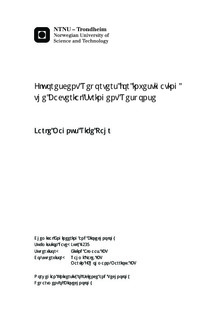Fluorescent Reporters for investigating the Bacterial Stringent Response
Master thesis
Permanent lenke
http://hdl.handle.net/11250/246032Utgivelsesdato
2013Metadata
Vis full innførselSamlinger
Sammendrag
The ``stringent response'' is a bacterial physiological adaptation to nutritional stress most well studied in the model organism \textit{Escherichia coli}. It is a research topic of interest both for increasing our understanding of bacterial physiology in general, and because of the potential for informing development of treatments for bacterial diseases. The small regulatory molecules penta- and tetra-guanosine phosphate, collectively referred to as (p)ppGpp, are known to be central in the regulation of the stringent response, but convenient methods for assessing intra-cellular concentrations of (p)ppGpp are currently lacking. One possible way to assess intracellular levels of a regulatory molecule is to place a ``reporter gene'' encoding a fluorescent protein, under transcriptional control of a promoter regulated by the molecule. Here, several plasmids encoding a variant of the green fluorescent protein (GFP) under different promoter sequences for this purpose have been constructed. The promoters differ with respect to whether and how they are effected by (p)ppGpp level, previous evidence showing either postive (up-regulation), negative (down-regulation) or indifferent (no \textit{direct} regulation) transcriptional response to increasing (p)ppGpp levels. Preliminary characterisation of GFP production directed by the different promoters, as measured by fluorescence, have been carried out with cells growing under both non-perturbed conditions and in the face of elevated (p)ppGpp levels. To elevate (p)ppGpp levels, production of a fragment of the ppGpp synthase RelSeq from \textit{Streptococcus equisimilis} was induced by use of a second plasmid.
